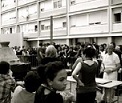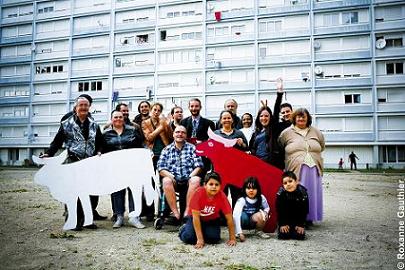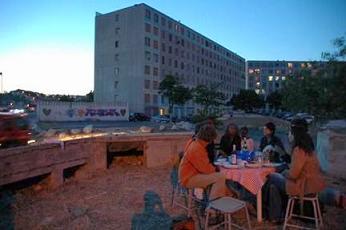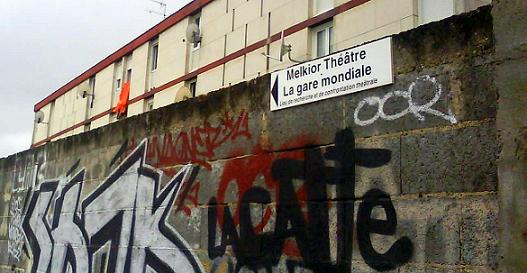ARTISTIC CREATIVE PROCESSES AND URBAN RENEWAL - JUNE 2009
The long summary is now avalaible in english!
Artistic and cultural projects within the framework of urban development policy involve many different issues and many different partners. It is still always difficult to create or provide conditions for the real participation of sections of the population and durable collaboration between partner organisations, especially as there is no established ordinary system for this type of project.
The long summary is now avalaible in english!

Giving priority to proximity
Proximity is a key word for projects reported during this workshop. Without proximity, it is impossible to put in place an artistic creative process that really takes into account the places, the partners and, of course, the local people to whom the creative process or project is addressed in the first place. Therefore, if they have not already been working in the neighbourhood in question, the arts operators [i.e., the professional people actively involved in arts production, organisation or promotion] and/or the artists themselves tend to move into the area to live. Setting up a steering committee also aims to bring together various initiators of the project so that they can keep each other informed of what they do and of the specific features of their field of action. As regards local people, the challenge is to get them to take part in the project, from its inception to its final presentation. The difficulty is in getting them interested when they may have other priorities (such as employment, housing, etc.).
Building projects case by case
In this context, the legitimacy or rightful place of the artists and other active players in the arts is a recurrent question, heightened by the encounter with the social players who are their main partners in this type of creative process. Some conditions appear to be absolutely necessary for success: working with the local people to get them involved in the creative process (for example, by collecting spoken word accounts); bringing in players from outside the neighbourhood, sometimes highly-reputed artists; enabling local people to go outside their habitual living-place. These are only main trends, since makeshift “do-it-yourself†is the predominant method for making every project unique and singular, especially as – in everyone’s opinion (even if some regret it when raising the subject of their long-term survival) – these projects are based on people rather than on structures or organisations. The implementation and continuation of projects depends on the right or wrong encounter between the people involved. Therefore it is understandable that mentioning the possibility of a model for projects of this kind creates strong reactions.

The difficult relationship with institutions
All the participants in this workshop spoke of their difficult position in relation to the institutional funding bodies, particularly the Ministry of Culture. For the Ministry, the system of official certification, although it is changing, still works too much like a single assessment table for acknowledging the quality of projects and subsidizing them. However, the creative processes discussed in this workshop do not fit easily into institutional pigeon-holes because they are at the intersection of several fields (cultural, social, urban development policy, etc.). Two options are expressed by people who attended: either you have to look for official certification while striving to keep your specificity, or else you try to change the institutional assessment criteria according to more complex practices that are applied within neighbourhoods. Despite this opposition, all the contributors recognize that they will have to revert to more official approval agreements, or at least to long-term financial backing adapted to suit projects which themselves do not have any point unless they take place over a period of several years. This would overcome the culture of the productive result (of which the attendance rate is the clearest expression), which is totally inadequate in such circumstances.
Above and beyond the arts and culture
Therefore it is urgent for members of ARTfactories/Autre(s)pARTs to work on proposals for new forms of official approval agreements that take into account the need for an inter-Ministry approach. Ordinary loans are becoming like manna which the artistic and cultural sector may only benefit from if it demonstrates the overall scope of its actions. In other words, only if it manages to obtain recognition for the social and historical utility of artistic creative processes within the framework of the urban development policy. This is why it is important for ARTfactories /Autre(s)pARTs to approach players who are active in the community enterprise, voluntary non-profit and sustainable development sector, in which people are already struggling to establish different indicators (of wealth, for example) that prefigure an alternative model of society.
Sébastien Gazeau
Texts written on the basis of discussions in Dijon on 10 & 11 June 2009 during the workshop on “Approches artistiques et régénération urbaine†[Artistic creative processes and urban renewal]
Quentin Dulieu (Af/Ap)
Coordination of Discussion Workshops






